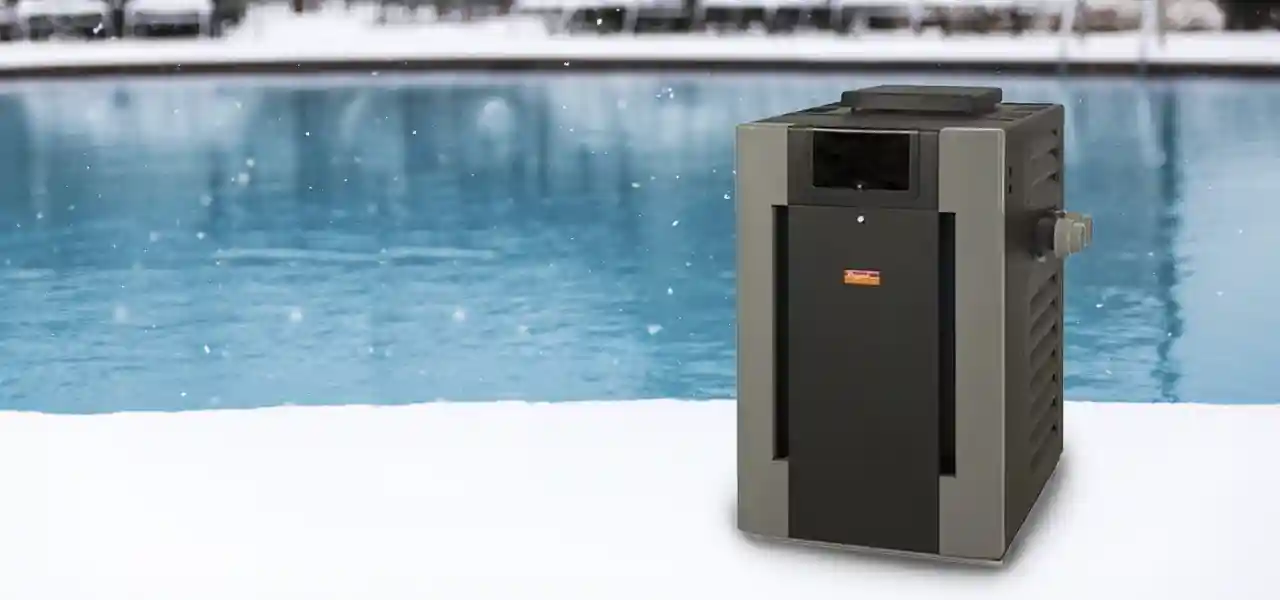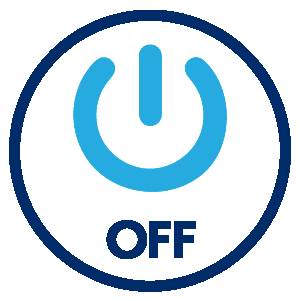FREE Standard Shipping On All Orders $100 or More!*

Digital Pool Heaters: My Pool Heater Won't Come On!
Digital pool heaters have come a long way in the past few years. Self-diagnostics and digital readouts have made life simple for repair technicians. Low flow? The heater tells you. Heater too hot? The heater tells you. Pool too hot? The heater tells you. Filter dirty? The heater tells you. There’s not much to troubleshoot, but what about the things the heater can’t tell you? Here are some frequently asked questions about digital pool heaters that are NOT in the book.
1. My heater is leaking water.

Digital pool heaters can leak from several places. Or it could not be leaking at all; it could be just condensation. If the pool water is cold and the heater has just been fired up, then the heater may emit heater rain. Heater rain is condensation that drips water down on the burner tray from the heat exchanger. This means lots of sizzling and noise, but rarely enough moisture to leak water out from the bottom of the heater, like a leak in the system would.
Now, if there is water pouring, or leaking from the heat exchanger, then the internal components are failing and you need immediate repairs. The most common cause of a leaking pool heater is the heat exchanger. Most heat exchangers are made of copper, and copper is soft and susceptible to poor water conditions. Low pH, improperly plumbed chlorinator or excessive salt can all reduce the life of a heat exchanger. If the heat exchanger is OK, then it could be the headers, or header gaskets. Whatever the cause, the heater will need to be disassembled in order to properly diagnose and find the problem.
2. My heater has no power.
If it looks like the heater has no power, then you need to confirm that. Is there anything on the display panel? Do the indicator lights come on? If the answer is no, then you need to check the voltage.

Regular voltage of 120 or 240 volts is delivered to the heater and wired to the heater transformer that reduces (or transforms) the current to 25 volts. This electricity is sent to an electronic switching device called the IID (intermittent ignition device), sometimes called the ignition control. This acts as a pathway or distributer to and from the control circuit.
From here, the current flows through the safety and control circuit. The transformer is the key here. Check the line voltage going into the transformer. It needs to be either 120V or 240V, depending on how it was originally wired. You will need a multi or voltage meter to check the voltage accurately. Then, if you have the voltage going to the transformer, and no voltage leaving the transformer, then it’s probably the transformer that needs replacing.
If there is no voltage going to the transformer, then check the breakers, the pump switch or the heater power supply. If you have power to the transformer and power leaving the transformer, but still no lights or display, then check the IID, or control module.
3. Heater has power, but no ignition.
This can mean several things. The most common cause is flow, a dirty basket, or clogged or dirty filter. A pool heater is an “open boiler” system, meaning the heater is cooled by the water flowing through the heater. All pool heaters have a pressure switch or flow switch that measures the flow rate of water pumped into the heater. If there is not enough water flowing through the heater, it will not operate, which is a bit of self-preservation on your heater’s part. If the filter and baskets are clean and water flow and filter pressure are normal, then the problem usually is in the safety or control circuit.
Some heaters have a bypass assembly, where some of the water can be bypassed by means of a valve in between the filter and heater. If open too much, this valve can direct most of the water around the heater, causing the pressure switch to open and prevent heater firing. Bypass valves should be set with a use of a Pete’s Plug thermometer to create optimum temperature rise.
4. My pool heater is making noise.

Sometimes, a pool heater will make noise. Heater noise can be caused by several different things. It’s usually attributed to flow, meaning if the heater is not getting enough water, the water can get hot and begin to boil, causing a banging sound. Sometimes, that sound is loud. It can be knocking, banging so loud, that you can hear it across the yard. Most heaters have an internal bypass that regulates the flow of the pool water to the heat exchanger. If that bypass fails, then not enough water will flow through the heat exchanger, and the water will get hot and begin to boil within the heat exchanger. That makes noise.
Another cause can be a calcium or lime buildup in the exchanger. If there is a water chemistry problem, then calcium will build up inside the exchanger. The buildup can be so much that it will close off the tubes of the heat exchanger with calcium deposits. If that is the case, the tubes can be cleaned with a wire brush and a drill.
Diagnostic Codes For Raypak Pool Heaters
| Status Code | Meaning |
|---|---|
| CFH | Call for heat |
| CLK | Time Clock |
| EOL | End of line test (Factory Use Only) |
| LON | Low NOx Unit |
| OFF | Off |
| PRO | Propane gas configured |
| REM | Remote control activated |
| SPK | Spark |
FAULT CODES
| Fault Code | Meaning |
|---|---|
| BD1 | Board failure |
| EEP | Microprocessor error |
| FAN | Blower pressure failure |
| FFL | Flame sensing when pilot and gas valves are closed |
| GVC | Gas valve closed |
| GVO | Gas valve open |
| HL1 | High limit switch #1 open |
| HL2 | High limit switch #2 open |
| IGN | Ignition failure |
| ILO | Ignition lockout; propane units only |
| PRS | Water pressure switch open |
| ROL | Heat rollout safety switch open |
| SNS | Sensor failure, water temperature below 36°F or above 110°F |
| VNT | Vent switch open |